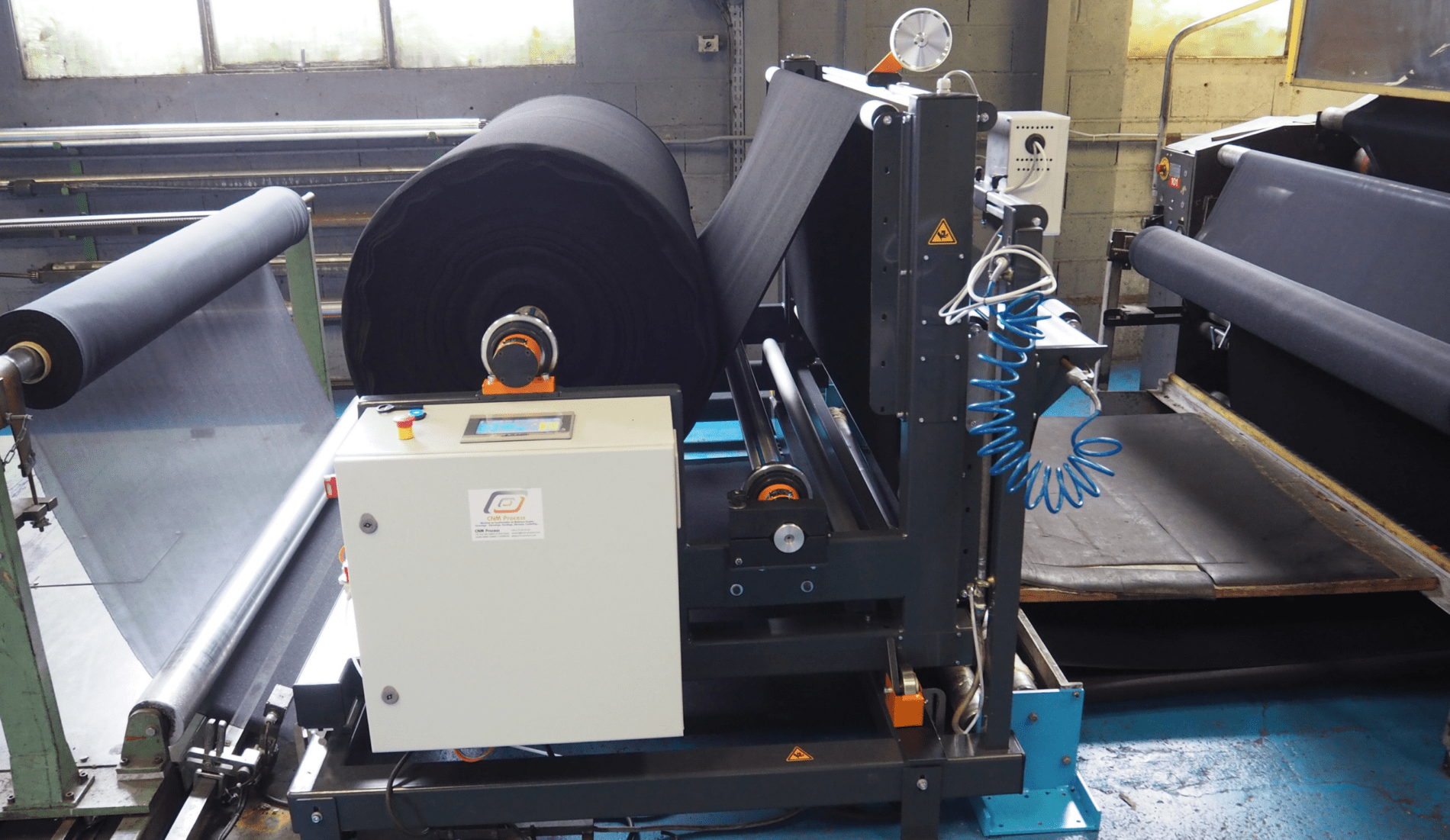Border tracking unwinder for integration on production lines
Customer business sector : Foams converter
Customer business sector : Foams converter

The customer is looking to install a low-tension unwinding system on its existing production line. The system is to enable the controlled unwinding of resin-impregnated foam, in preparation for its passage into a thermolamination machine for complexing with other materials. Challenges included aligning a poorly wound material with irregular edges, and unwinding with minimal tension while maintaining good guidance, without using a loop which doesn’t work for this type of material.
We worked on our standard unwinder using low-friction cylinders, enabling us to apply a tension of 10N to a 1600 mm web width. In collaboration with our partner IE Concept, we developed a camera able to perform edge smoothing using an average of three points. Thanks to a machine learning algorithm, this camera creates a virtual reference and detects the position of the material in relation to this reference. The major advantage of this system is its robustness and insensitivity to external light variations, unlike conventional vision systems. Smoothing is performed over an area of 150 mm.
We have set up control parameters available to the operator. These parameters are used to manage the motor dynamics, adjusting them to the reaction of the material and the line speed. In our case, the line speed is relatively low, around 3 m/min. It was essential to achieve very smooth dynamics at the unwinder, so as not to impose excessive stress on the material and disturb the tension or encourage the appearance of folds.
We’re very satisfied, because we’re able to relax the material compared to its original roll. This material has an extremely expensive coating, and we optimize the usable surface by increasing the width (3 cm) thanks to the reduction in tension. In addition, the two key points of the project are respected, notably the precision of the realignment, which is around 3 to 4 tenths. As a result, we have been able to increase production, as there is no longer any material wastage.